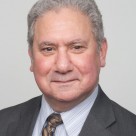 "People generally want to do good work," says Phillips, "but we as leaders…create most of our problems by mis-hiring."
"People generally want to do good work," says Phillips, "but we as leaders…create most of our problems by mis-hiring."
SAN FRANCISCO — When IREM (the Institute of Real Estate Management) convenes here for its 2019 Global Summit next month, attendees will get a healthy dose of Vitamin E…E for engagement, that is.
The session on engaging employees (appropriately titled: "A Shot of Vitamin E–Engagement) will be conducted by Deborah R. Phillips, Ph.D., CPM, and she knows whereof she speaks. Phillips, a long-time IREM instructor and president of The Quadrillion, an international consulting firm, completed her Ph.D. at Georgia Tech with a focus on this very subject, and has since taught more than 10,000 students in her courses at the University of Georgia, Georgia Tech, and other institutions.
So, yes, there is a method to employee engagement, she says, but "It's not rocket science. You know when an employee is engaged, putting forth extra, discretionary effort, with loyalty and a long-term commitment to the organization." This as opposed to someone who's just phoning it in, or simply "enrolled," as she describes it.
Job Alignment & Engagement
Engagement is more than a warm and fuzzy feeling, and Phillips sees it as a critical driver of bottom-line financial results: "There are four legs on this stool. First, real estate is capital intensive–human capital. Second, to scale any business you need systems and processes around people that help them do their jobs. Third, every employee wants to do meaningful work. Finally, engagement makes business sense. Data shows that when talent and job fit are aligned, you have lower turnover, higher sales and profits, and fewer unscheduled absences. So there's a business case for engagement."
The alignment of job and talent that she mentions is key to employee engagement. "Many people think it's enough to pay your staff well," she says. "But, despite salary, if the job fit isn't right, the paycheck will wear out pretty fast."
Not surprisingly, while job fit is a prime component of an environment conducive to an employee's long-term success, it doesn't stand alone, and Phillips also counts "clear expectations" as critical to such an environment. "So is trust between the employee and immediate supervisor, and rewards and recognition." Along with that comes practical support in the form of "providing the materials, systems and tools they need to do their jobs correctly."
Possibly most important of all is a clear sense of the company's "mission and purpose," she says. An example from the domain of property management would be the passion a worker might feel for managing workforce or affordable housing. Such an alignment of job, skill and passion raises real estate "from the transactional to the transformational."
Humpty Dumpty and You
On the flip side of this, resurrecting the passion and engagement of someone who's just enrolled is a matter of corporate bandwidth. "Can you put Humpty Dumpty back on the wall?" she asks. "If you have a skeleton crew and an enrolled employee, the team may not have the bandwidth to address the issue. A larger team may have in place ways to assess job fit and might be better able to have that coaching conversation."
Bandwidth aside, enrolled or disengaged employees are a problem everyone shares. "People generally want to do good work," she says, "but we as leaders often find ourselves in a hiring pinch and think we have to have someone immediately. We create most of our problems by mis-hiring."
And this speaks to the mindset and culture of the company, a question that points directly to the C-suite. "The speed of the leader determines the speed of the pack," says Phillips. "If the C- suite isn't talking about engagement, it's not coming from the bottom to the top. That demands a shift in culture, that Vitamin E that we'll talk about at the Global Summit. If you don't have engagement, you have people drifting without focus. Just like diversity and inclusion, engagement is driven by a champion."
Like engagement itself, Phillips' session will also be more than simply warm and fuzzy, and that Vitamin E will come with a heavy dose of reality for attendees. "We're going to look at what engagement is," she says, "how to measure it and what to do for those who are totally disengaged. And then we'll drill down to specific things that can increase engagement. When people leave my session, not only will they be able to identify who's disengaged, enrolled and engaged but also how to infuse engagement to enhance a profitable bottom line."
© 2025 ALM Global, LLC, All Rights Reserved. Request academic re-use from www.copyright.com. All other uses, submit a request to [email protected]. For more information visit Asset & Logo Licensing.








